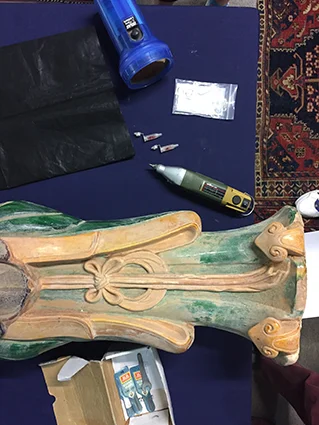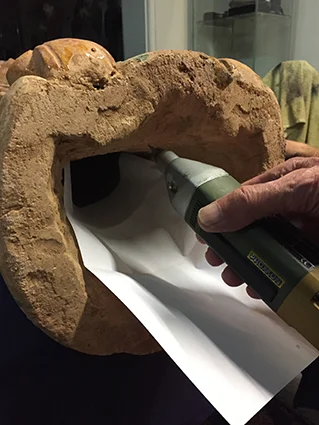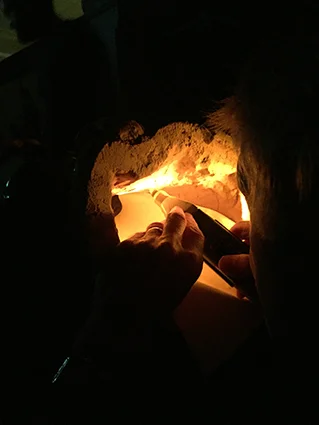Thermoluminescence (TL) Testing
Thermoluminescence (TL) dating is a process used to determine the age of sediments. In the case of pottery from antiquity, the TL testing as a way to obtain the approximate age (+/- 20-25% uncertainty) of an ancient work of art.
Pottery contains quartz-rich sediments and it is these quartz crystals that are the key to dating a work of ancient pottery. As only the quartz is used in the TL dating process, these minute grains must be removed from the bulk of materials in the clay mix.
Obtaining and preparing samples
To acquire the samples, small specimens of the pottery are carefully separated using a small drill in a dark environment. These are labelled, wrapped in light-proof protective bags ready for testing.
Back in the testing lab, the samples are separated into grains that are between 1 and 8 micrometres in size. These grains are then deposited to obtain a number of smaller portions, or sample aliquotes, which are then heated to 500 degrees celsius to obtain a thermoluminescence signal.
The images below show the process of drilling to collect the powder from a pottery work of art. This is all carried out in almost complete darkness under safety lights with an orange hue.
Measuring the energy
The approximate age of the pottery is identified by examining two key measures:
The base level of TL that the pottery has absorbed (the archaeological dose) and,
The annual radiation dose received.
The older the pottery, the more radiation it has absorbed and the more the sample glows a faint blue when heated. It is this blue glow that is known as thermoluminescence and measuring its' strength (or the amplitude of the TL signal) tells us the age of the work of art.






